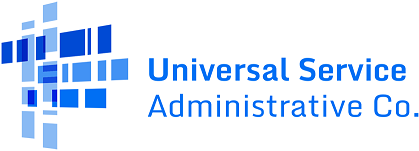ACAM II
Established by the 2018 Rate-of-Return Reform Order, the Alternative Connect America Cost Model (ACAM) II program provides funding to rate-of-return carriers that voluntarily elected to transition to a new cost model for calculating High Cost support in exchange for meeting defined broadband build-out obligations. Carriers that elected this option receive predictable monthly payments based on support of up to $200 for each funded location over the program’s 10-year support term (2017-2026). (Carriers electing ACAM II support receive transition payments if their ACAM II support is less than their 2018 legacy support.) Participating carriers must meet annual deployment milestones starting in year four, 2022.
Please see the Rate-of-Return Reform webpage for more information about FCC orders targeting rate of return carriers.
Service Requirements
Carriers that elected ACAM II funding must meet the deployment obligations published in the Public Notice authorizing them to receive A-CAM II support. These deployment obligations are based on the following service requirements:
- Maintain existing voice and broadband service as of December 31, 2018
- Offer broadband at speeds of at least 25 Mbps downstream/3 Mbps upstream (25/3 Mbps) to a number of eligible locations equal to the number of fully funded locations (locations for which the carrier receives support for the full cost of build-out) by the end of 2028
- Offer at least 4/1 Mbps service to a number of eligible locations equal to a percentage of capped locations (locations for which the carrier receives support for only the partial cost of build-out) depending on the population density of the carrier’s service area
- For a density threshold of 10 or more locations per square mile, offer speeds of at least 4/1 Mbps to a number of eligible locations equal to at least 50 percent of capped locations by the end of 2028
- For a density threshold of fewer than 10 locations per square mile, offer speeds of at least 4/1 Mbps to a number of eligible locations equal to at least 25 percent of capped funded locations by the end of 2028
- Meet similar deployment obligations for eligible locations on Tribal lands
Deployment Requirements
Carriers must offer at least one commercial voice service and one commercial broadband service that meet the relevant service requirements, and must meet the following broadband deployment milestones:
- 40 percent of 25/3 Mbps deployments by the end of year 4 (2022)
- 50 percent of 25/3 Mbps deployments by the end of year 5 (2023)
- 60 percent of 25/3 Mbps deployments by the end of year 6 (2024)
- 70 percent of 25/3 Mbps deployments by the end of year 7 (2025)
- 80 percent of 25/3 Mbps deployments by the end of year 8 (2026)
- 90 percent of 25/3 Mbps deployments by the end of year 9 (2027)
- 100 percent of 25/3 Mbps deployments by the end of year 10 (2028)
Please see this spreadsheet for carrier-specific deployment obligations.
Annual Filing Requirements
Carriers receiving ACAM II support must comply with the following filing and certification requirements annually:
- Quarterly: Submit speed and latency test data from performance measures testing conducted for one week of each quarter of the calendar year at a USAC-selected random sample of locations reported in the HUBB that have active subscribers. Carriers must file and certify test results within two weeks of the end of the quarter. Submit speed and latency test data in the Performance Measures Module.
- March 1: Submit and certify deployment data in the HUBB showing where the carrier built out broadband using CAF support in the previous calendar year (and complete separate deployment milestone certifications) or certify that the carrier has “no locations to upload.” Carriers must report latitude and longitude coordinates, minimum speeds offered and date of deployment, among other information, for every location where mass-market, high-speed Internet service is available. Submit Locations in the HUBB. USAC will conduct verification reviews to confirm deployment to a random sample of locations reported in the HUBB following each deployment milestone. Carriers must notify the FCC and USAC, and relevant state, U.S. Territory or Tribal governments if applicable, within 10 business days after the applicable deadline if they have failed to meet a build-out milestone (see 47 CFR Section 54.320(d)).
- July 1: Certify financial and operational data collected by FCC Form 481.
- July 1: Submit FCC Form 507 to report line counts.
- October 1: Certify that the carrier is eligible to receive High Cost support and used all support received in the proceeding calendar year only to provide, maintain and upgrade the facilities for which the support was intended and will do the same in the coming calendar year. State utility commissions certify carriers under their jurisdiction as eligible telecommunications carriers (ETCs). Carriers not subject to state jurisdiction self-certify. Learn more about the annual ETC certification.
Related Orders
Rate-of-Return Reform Order (FCC 18-176) – Order establishing ACAM I Revised and ACAM II and adopting new deployment obligations for rate-of-return carriers
Public Notice (DA 19-372) – Notice announcing offers of A-CAM II support
Public Notice (DA 19-504) – Notice announcing corrected A-CAM II offers and the extension of the A-CAM II election deadline
Public Notice (DA 19-650) – Notice announcing guidance regarding Alternative Connect America Model (ACAM) deployment obligations
Public Notice (DA 19-808) – Notice authorizing 171 Rate of Return carriers to receive A-CAM II support.
